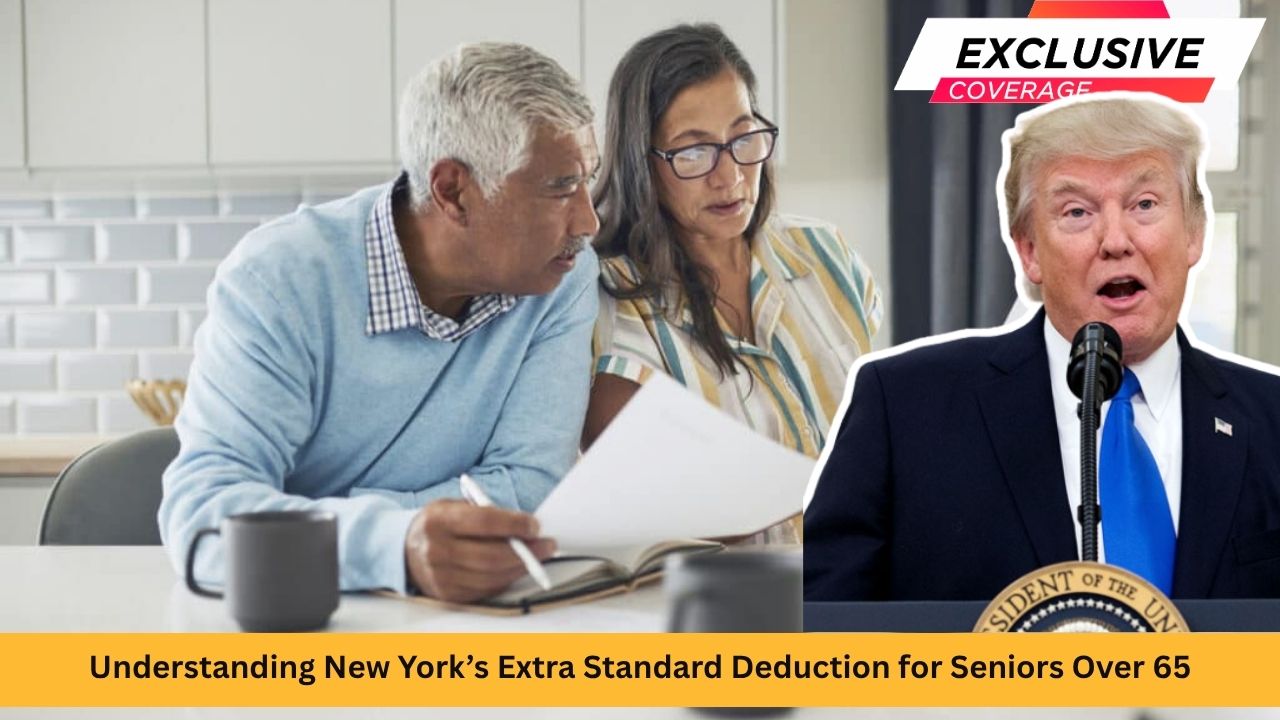Retirement in New York is undergoing significant change, driven by an expanding senior population, shifting tax laws, and the evolving needs of older adults. For New Yorkers over 65, understanding the evolving landscape of tax benefits—including the extra standard deduction—is key to maximizing financial security in retirement. This comprehensive guide will explore the extra standard deduction for seniors over 65, highlight property tax exemptions specific to New York’s diverse cities, unpack the broader context of aging in the Empire State, and provide practical insights for residents hoping to age with dignity and confidence.
The Growth of New York’s Senior Population
New York’s over-65 population is not only growing—it’s booming and reshaping communities across the state:
-
Nearly one in five New Yorkers is now 65 or older, representing around 3.5 million people. This is more than the entire population of many U.S. states.
-
Cities such as New York City, Buffalo, Rochester, Albany, and Syracuse have all recorded significant increases in their senior residents over the last decade.
-
In New York City alone, over 1.43 million adults are aged 65 and above, reflecting a surge of more than 50% since 2000.
-
Upstate counties like Saratoga—experiencing a 55% growth in seniors—are seeing the legacy of the Baby Boom generation play out in city and town demographics.
This demographic shift is profound. In every corner of New York State, from the boroughs of New York City to rural towns in the Adirondacks, seniors are emerging as both community pillars and a group in need of targeted support.
Why the Extra Standard Deduction Matters
Taxes remain a complex aspect of retirement planning. For seniors, every dollar of tax savings counts when living on fixed or modest incomes. The federal and state tax codes recognize this, granting adults aged 65 and over an “extra standard deduction”—a significant provision that directly reduces taxable income and, ultimately, the tax owed.
Key reasons why the extra standard deduction for seniors is crucial in New York:
-
Cost of Living: New York’s cost of living, especially in cities like Manhattan and Brooklyn, can outpace national averages. An expanded deduction can help offset these higher expenses.
-
Poverty Risks: About 37% of New Yorkers over 65 live below or near the poverty line. Targeted tax relief is a meaningful tool for reducing financial stress.
-
Diversity in Needs: The senior population in New York is now the most diverse ever, with substantial increases in Asian, Hispanic, and Black seniors in both urban neighborhoods and suburban areas.
What Is the Extra Standard Deduction for Seniors?
The extra standard deduction is an additional deduction amount that eligible seniors can add to their regular federal standard deduction when filing a federal tax return. With recent legislative changes, seniors in New York benefit from a combination of federal, state, and local tax relief:
-
At the federal level, adults aged 65 and older receive a larger standard deduction than those under 65.
-
Starting in 2025, qualifying seniors may also access a new, separate supplemental deduction on top of the pre-existing ones.
Eligibility Requirements
To claim the extra standard deduction, most individuals must:
-
Be aged 65 or older by the end of the relevant tax year.
-
File either individually, as head of household, or as a couple (where at least one spouse is over 65).
-
Complete the appropriate section of their federal (and, in some cases, state) return, indicating their eligibility for the extra deduction.
For those who are blind, the deduction may be enhanced further.
How the Extra Standard Deduction Works
For the 2025 tax year in New York:
-
A single filer aged 65 or older can claim both the regular standard deduction and an extra deduction.
-
Married couples filing jointly, both aged 65 or older, receive twice the extra amount—if both spouses qualify, this can mean thousands in added deduction.
-
For seniors who are also legally blind, additional deductions stack on top of the age-related ones.
Here’s a simplified illustration (with example data):
| Filing Status | Standard Deduction | Extra for 65+ | Extra if Blind | Total Possible Deduction |
|---|---|---|---|---|
| Single or Head of Household | $14,000 | $2,000 | $2,000 | $18,000 |
| Married Joint, One Over 65 | $28,000 | $1,600 | $1,600 | $31,200 |
| Married Joint, Both Over 65 | $28,000 | $3,200 | $3,200 | $34,400 |
Alongside the standard deduction increase, recent federal legislation added a new deduction for 2025 through 2028:
-
Seniors aged 65 or older may claim an additional $6,000 per individual.
-
For married couples both over 65, this results in $12,000.
-
This new deduction phases out for taxpayers with adjusted gross incomes over $75,000 (single) or $150,000 (joint).
This layered approach means qualifying New Yorkers can exempt more retirement income from taxation than ever before.
How to Claim the Extra Standard Deduction
Filing for the extra deduction is straightforward but must be handled correctly:
-
Complete IRS Form 1040 or 1040-SR, clearly checking the box indicating age 65 or over.
-
For state taxes, review the Department of Taxation and Finance guidance to determine whether New York has state-specific add-ons for seniors.
-
Maintain documentation proving your age, filing status, and any legal blindness if applicable.
-
Consider working with a tax professional, especially if you have additional sources of income, disabilities, or own property.
Property Tax Exemptions for New York Seniors
Beyond income tax deductions, New York State and many of its cities, towns, and counties offer targeted property tax relief for older residents. The most common is the Senior Citizen Homeowners’ Exemption, which can cut a senior’s property tax bill dramatically.
Property Tax Relief in Major Cities
New York City (NYC) – Senior Citizen Homeowners’ Exemption (SCHE):
-
Available to homeowners aged 65 or older who meet income requirements.
-
Applies to co-ops, condos, one-, two-, or three-family homes.
-
Provides up to a 50% reduction in the taxable value of the property.
-
Income eligibility is generally capped at $58,400, depending on the exemption percentage.
Buffalo and Western New York:
-
Erie and Niagara Counties are adopting similar exemptions, with 18% of these counties’ population now age 65 or older.
-
Sliding-scale exemptions allow partial relief for moderate-income seniors.
Albany, Rochester, and Syracuse:
-
Albany County has seen a 32% increase in seniors over the past decade, leading to expanded outreach for property tax exemptions.
-
Syracuse’s growth in senior poverty has prompted ramped-up efforts to ensure residents are applying for all available relief.
Other cities such as Yonkers, Utica, and Poughkeepsie are also increasing outreach and adjusting exemption limits to keep pace with the needs of their older residents.
How the Property Exemption Works
-
The reduction is applied to the assessed value of the home, lowering the base upon which taxes are calculated.
-
To qualify, applicants must be 65 or older, meet income restrictions (specific to locality), and submit forms yearly.
-
Many municipalities allow sliding scales: seniors above a base income threshold may receive a reduced exemption, such as 20%, 10%, or down to 5%.
Examples from Across the State
Saratoga County:
A leader in senior population growth, where property and income tax relief have become top legislative priorities, especially as 55% more seniors call Saratoga home compared to a decade ago.
Queens:
Home to the fastest-growing older adult community in New York City, with thousands benefiting from both the SCHE and increased state standard deduction.
Yonkers and Rochester:
Urban centers where diverse, multi-lingual outreach campaigns are helping seniors apply for both income and property relief programs.
Social Security and Retirement Income Exemptions
-
All Social Security retirement benefits are exempt from New York State income tax.
-
Up to $20,000 of pension or annuity income (public or private) may be excluded for those aged 59½ or older and receiving income from certain retirement plans.
-
Qualified seniors can combine this exclusion with the extra standard deduction.
Additional Considerations for New York Seniors
-
Health Care Costs: Many seniors have significant medical expenses; properly claiming deductions for medical costs or exploring eligibility for Medicaid can provide further relief.
-
Renters’ Credits: Certain elderly renters may qualify for credits against their state income tax, especially if rent exceeds a percentage of annual income.
-
Supplemental Needs: Outreach programs in cities like Rochester and the Bronx help non-English speakers and seniors with disabilities navigate complex eligibility forms.
Planning for the Future
With the population of older adults expanding rapidly, New York’s cities, counties, and state agencies are re-evaluating exemption amounts, income thresholds, and outreach programs. Several trends are shaping this landscape:
-
Increasing eligibility thresholds in high-cost areas like New York City and Long Island.
-
Proposals for automatic renewal or simplified re-application processes, especially for property tax relief.
-
Community partnerships in metropolitan areas (for instance, in Brooklyn and Manhattan) to improve awareness among minority and immigrant seniors.
Common Mistakes and How to Avoid Them
-
Failing to check the age-65 box on the tax return, which is required to trigger the extra standard deduction.
-
Assuming Social Security benefits are taxed at the state level—they are not, in New York.
-
Overlooking property tax exemptions, which can be substantial.
-
Missing annual re-application deadlines for exemptions, particularly at the local level.
The Bottom Line: Empowering Seniors in a Changing New York
The extra standard deduction for seniors over 65, combined with state and city-specific property relief, form a vital part of New York’s social contract with its aging residents. As this population grows—bringing both challenges and opportunities—these tax protections are crucial tools for sustaining independence and quality of life.
From the fast-paced boroughs of New York City to the tranquil settings of the Hudson Valley, the Adirondacks, and Lake Ontario’s shores, seniors are at the heart of New York’s communities. By claiming every available deduction and exemption, older adults can maximize their resources, remain active members of their neighborhoods, and continue to shape the story of the Empire State well into the future.
Frequently Asked Questions
Who qualifies for the extra standard deduction in New York?
Any filer aged 65 or older by the end of the tax year. Eligibility applies regardless of whether you take the standard deduction or itemize, and the provision increases if both spouses qualify.
Is property tax relief automatic?
No. Most property tax exemptions require annual application and proof of both age and income.
Can the extra deduction be combined with other local tax benefits?
Yes. The extra standard deduction works alongside both state-level and local property tax exemptions, as well as federal income exclusions for Social Security and pension income.
What happens if I move cities within New York?
Tax benefits may follow you, but property tax exemptions depend on the rules of your new city or county. Check with the local assessor’s office for current forms and procedures.
Resources for Getting Help
If in doubt, seek out these resources:
-
New York State Department of Taxation and Finance: Up-to-date forms and eligibility lists.
-
Local city or county assessor’s office: Essential for property tax exemptions and re-applications.
-
Community organizations like AARP New York, as well as senior centers in Brooklyn, Queens, Albany, Buffalo, and other cities, often offer free or low-cost tax assistance tailored to seniors.
By staying informed and proactive, New York seniors and their families can make the most of valuable tax benefits designed for a secure, vibrant retirement.











Leave a Comment